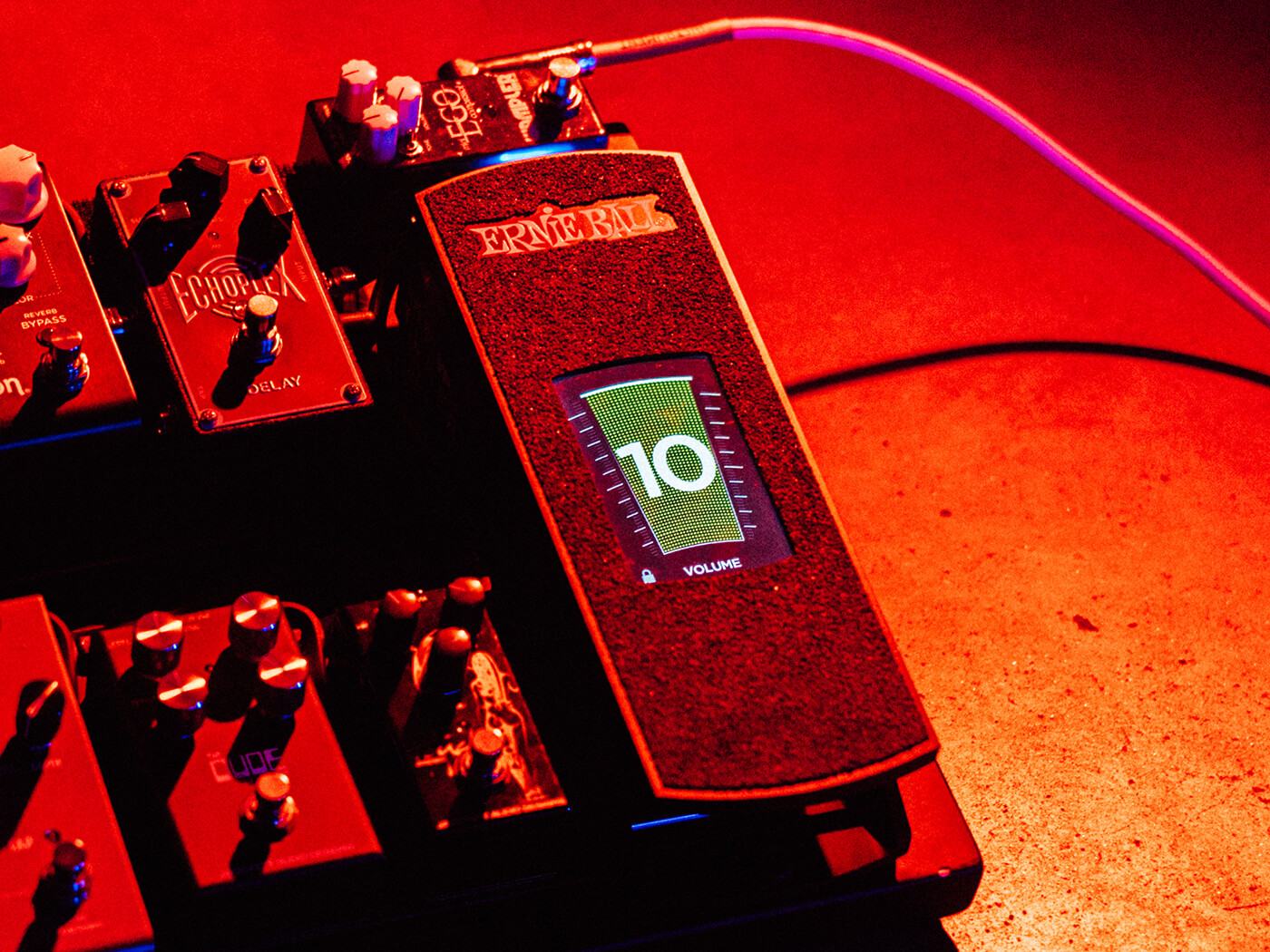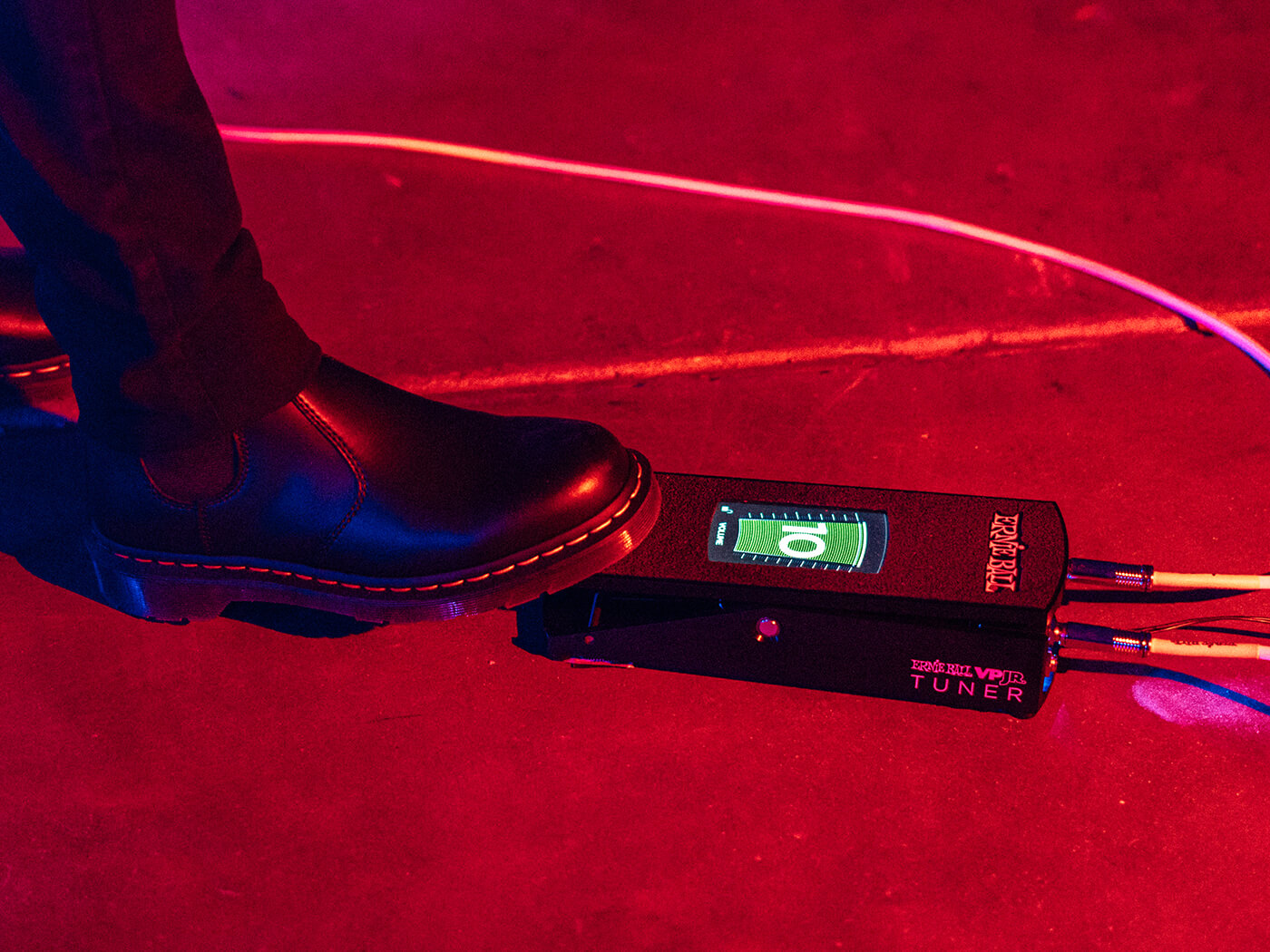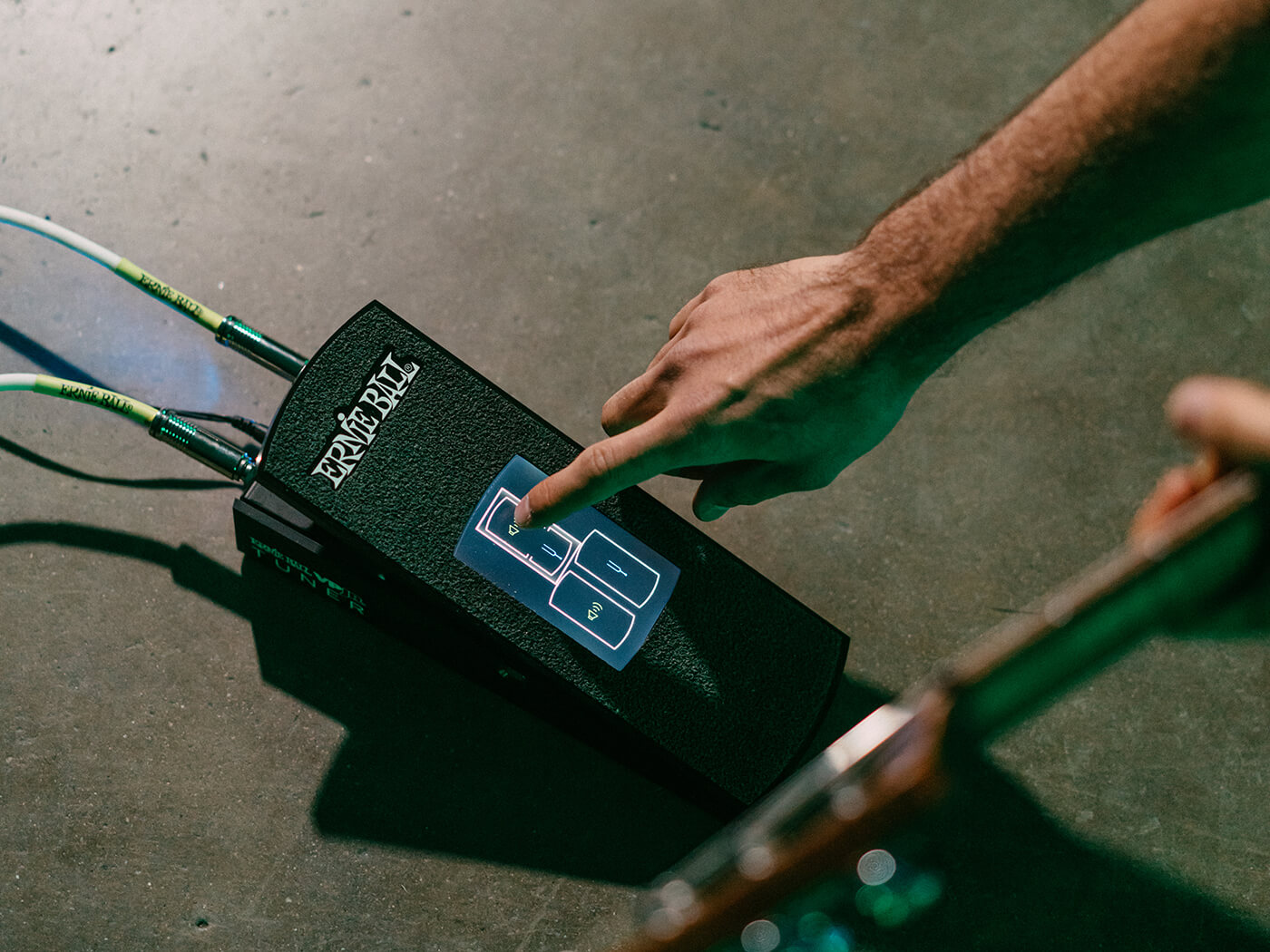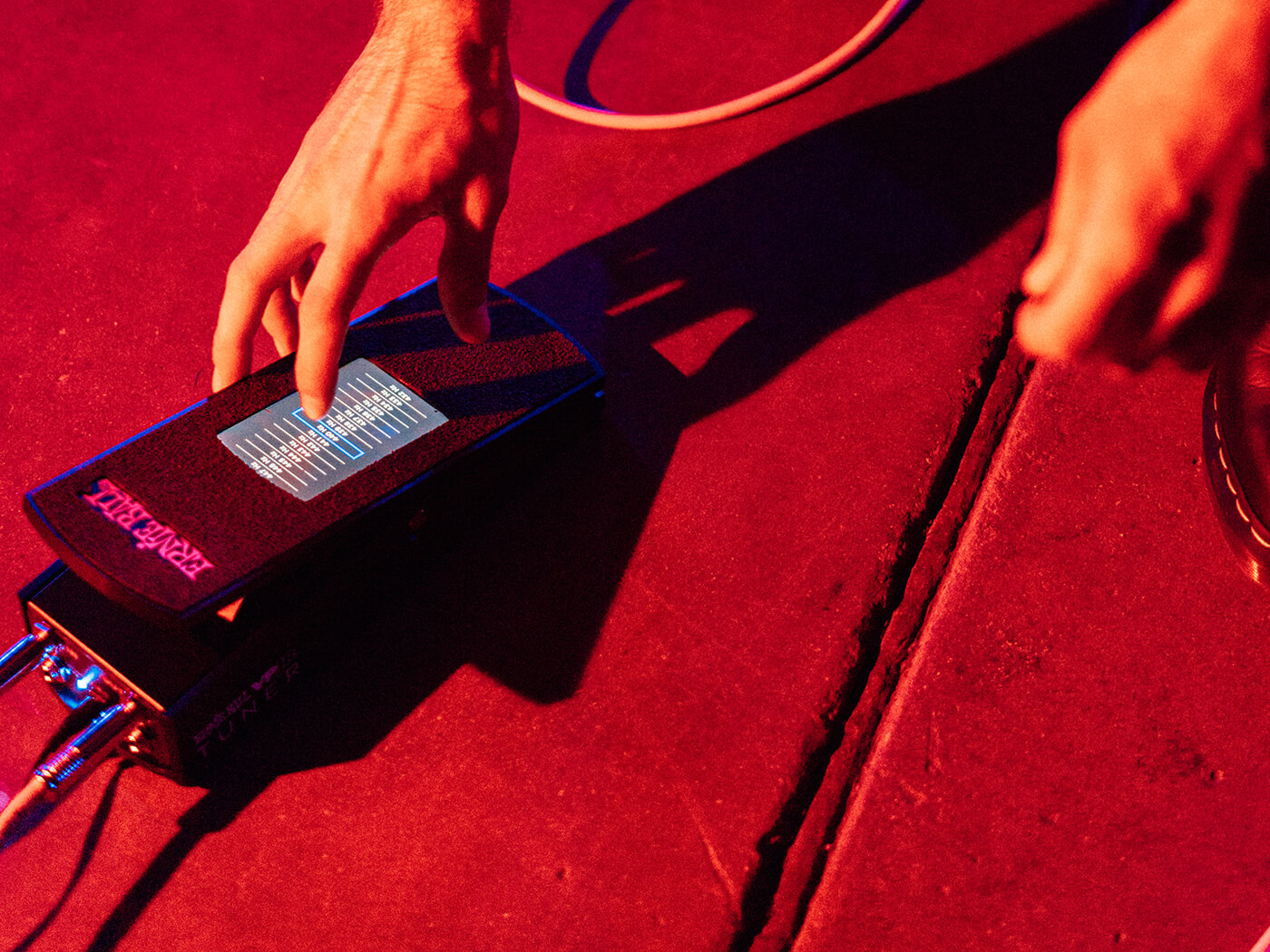Related Tags
Review: Ernie Ball VPJR Tuner
With its two-in-one approach, Ernie Ball’s latest innovation aims to combine two functional stalwarts to give you more room for sexy stuff on your board, with some handy extra features to boot.

Review Overview
Our rating
8
Our verdict
The humble tuner is an essential component of any pedalboard, but sometimes it’s hard not to feel like it’s taking up valuable pedalboard real estate where a much more exciting pedal – one that actually makes a sound – could be sitting. Over the last decade or so we’ve seen companies go to great lengths to scale down their tuners as much as possible but Ernie Ball has taken a decidedly different approach. Instead of trying to save space by scaling a tuner down to the point where you can barely see the damn thing, EB has opted instead to retrofit a tuner into that industry staple – the volume pedal – with the aim of offering the best of both worlds and more besides.
When it was first revealed as a prototype at NAMM 2019, the VPJR Tuner certainly elicited plenty of oohs and ahhs from people walking past the Ernie Ball booth. There’s something undeniably fun about seeing a familiar classic reinvented, in this case with a touchscreen routed out of the familiar skateboard-style grip tape on top of the pedal. But is it more than just a gimmick? Let’s dive in…

In use
Getting to grips with the VPJR Tuner couldn’t be simpler – depress the treadle to its heel-down mute position and you engage the tuner mode, which offers simple and precise tuning for each string individually, with both colour- (green for in tune, blue for out) and needle-based readouts for maximum accuracy. The display is large, bright and as a result much easier to read than many compact tuners – there’d no squinting at tiny LEDs on darkened stages here, and you soon begin to appreciate how much times this saves when you are tuning quickly between songs.
A double-tap on the screen in tuner mode enables you to select your tuner frequency above or below the standard 440Hz. If you prefer to have the tuner running all the time to keep an eye on your tuning mid-song, say, then you can select the display to run only in tuner mode when turning it on.

However, using it just in that mode would be robbing yourself of one of the VPJR Tuner’s most unexpectedly useful features. In the default volume and tuner mode, as you ease the volume up, it switches the display from the tuner to a visual depiction of your volume level from 1-10, so you can see exactly how loud you are at a glance. Of course, if you’ve used a volume pedal in anger you’ll know that much of the level setting is done by ear and feel, but having a readout is so useful in ensuring that you leave the treadle exactly where you want it every time. And that’s before we even get into how useful it is to have an FX send and return.
The elephant in the room here is the price. At nearly 250 notes, the VPJR Tuner costs nearly double what you’d pay for a standalone Ernie Ball VPJR volume pedal and a compact tuner such as the PolyTune Mini. That’s going to make awkward maths for many of us, but if you can justify the price, you get a truly useful pedalboard space-saver that offers the most visible floor-based tuner display around, and some useful hybrid bonuses into the bargain.
Key Features
- PRICE £249
- DESCRIPTION Tuner/volume pedal
- FEATURES Full-colour touchscreen display, effects loop
- POWER 9V DC only (not supplied)
- WEIGHT 2.6lb/1.2kg
- CONTACT ernieball.com
Like this? Try these
- Peterson StroboStomp HD Compact (£119)
- TC Electronic PolyTune 3 Mini (£59)
- Pedaltrain SST (£49)


